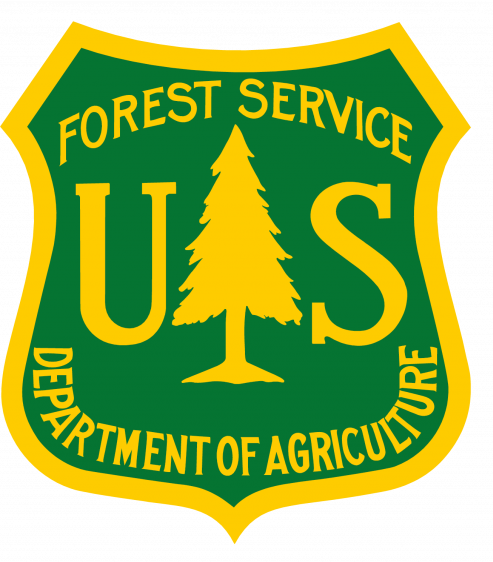The U.S. Department of Agriculture Forest Service (USFS) is a federal agency that plays a key role in formulating policy and coordinating technical and financial support for the protection and sound management of the world’s forest resources. It works closely with other agencies such as the Agency for International Development, the U.S. Department of State, and the Environmental Protection Agency, as well as with nonprofit development organizations, wildlife organizations, universities, and international assistance organizations. The Forest Service’s international work serves to link people and communities striving to protect and manage forests throughout the world. The Forest Service has a workforce of approximately 30,000 employees.
The Forest Service carries out its mission, “Caring for the Land and Serving People,” through five main activities:
- Protection and management of natural resources on National Forest System lands.
- Research on all aspects of forestry, rangeland management, and forest resource utilization.
- Community assistance and cooperation with State and local governments, forest industries, and private landowners to help protect and manage non-federal forest and associated range and watershed lands to improve conditions in rural areas.
- Achieving and supporting an effective workforce that reflects the full range of diversity of the American people.
- International assistance in formulating policy and coordinating U.S. support for the protection and sound management of the world’s forest resources.
OVERVIEW
The U.S. Forest Service (USFS) is involved in management of 80% of the forested land in the United States. The USFS collaborate closely with other U.S. Department of Agriculture. The U.S. Forest Service employs more than 30,000 natural resource specialists who are responsible for the daily management of USA’s national forests and grasslands. The Agency also works collaboratively with states, tribes, and private landowners, providing technical capacity building and education to support forest management on other lands.
The U.S. Forest Service International Programs office serves as a liaison between these technical specialists and researchers, helping to match the right experts to each of its international endeavors.
AREAS OF U.S. FOREST SERVICE EXPERTISE
Sustainable Forest Management: The U.S. Forest Service strives to sustain the health, diversity, and productivity of forests and grasslands to meet the needs of present and future generations.
- environmental impact assessments
- collaborative landscape management
- fire management
- forest inventory and monitoring
- forest restoration
- managing invasive species and pests
- reduced-impact logging
- combating illegal logging
- Lacey Act implementation
- reforestation and nursery management
- forest economics and planning
- timber contracting
- wood products and non-timber forest products
- mining and other extractive uses on forest land
Rangeland Management:
From grasslands to prairies, rangelands constitute about half (96 million acres, or 39 million hectares) of the lands administered by the U.S. Forest Service.
- coordinated resource management plans
- grazing management
- ecosystem and habitat inventory and monitoring
- water conservation
Climate Change: The U.S. Forest Service works to help forests, grasslands, and humans mitigate and adapt to global climate change.
- emissions inventory and analysis
- vulnerability and adaptation assessments
- low emission development strategies
- carbon monitoring
- Remote Sensing and GIS
Biodiversity and Habitat Conservation
The lands of U.S. Forest Service are home to diverse species of plants and animals, and we work hard to protect critical biodiversity at home and abroad.
- wildlife protection and habitat management
- biodiversity assessments
- valuation of ecosystem services
- migratory species protection
- ecosystem and landscape restoration
Protected Area Management: The U.S. Forest Service manages a diverse range of protected areas, from deserts in the Southwest to tundra in Alaska.
- recreation planning and infrastructure
- limits of acceptable change
- Roadless and Wilderness area classifications
Watershed Management: Forests are integral in sustaining the health and availability of fresh water around the world, and the U.S. Forest Service plays an active role in maintaining and rehabilitating watersheds.
- managing upland forests for water quality
- stream bank restoration
- engineering and road management
- erosion control
Disaster Management and Response: The U.S. Forest Service works around the world to build disaster management capacity, based on our longstanding experience managing wildfires in the U.S.
- Incident Command System
- disaster response coordination and preparedness
Informed and Engaged Citizenry: The U.S. Forest Service works to create an informed citizenry through environmental literacy and collaborative planning.
- urban and community forestry
- conservation education and interpretation
- tribal and community relations
- stakeholder and community participation
- trans-boundary issues (watersheds, migratory species)
- conflict management
Institutional Development: The U.S. Forest Service has developed innovative systems to help us get our work done efficiently.
- personnel management systems
- grants and agreements management
- budgeting and financial management
- ranger manuals
- legislation
- land acquisition and realty
- information management
- law enforcement and arson investigation
For more information: Visit the Forest Service website at: http://www.fs.fed.us



